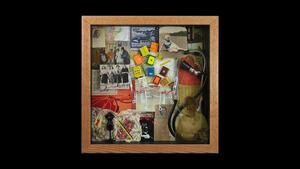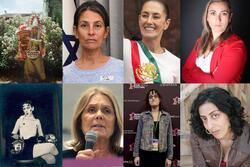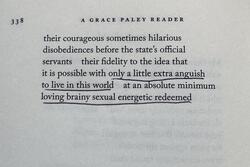“Thinking Inside the Box”: Framing My Grandmother’s Life
I had never taken the time to learn much about my grandmother, Esther Rebeca Leibowich de Bortz’s past. While I knew that something in her history must have gone right—she became a renowned gynecologist in Argentina—large gaps existed between each of the detailed but disconnected anecdotes that she recounted to me over the years.
My grandmother—or Bobe as I call her—and I have never lived in the same country. She was born in Argentina and has lived there for her entire life, while I was born in Chile and have lived in Atlanta for most of mine. With each of her visits, I learn more about this woman I have always been taught to revere, but in truth never knew much about. Consequently, I welcomed the opportunity to take the course, “Jewish Women in Modern America,” at The Weber School in Atlanta, where I am a junior.
While I knew Esther was notorious for making a short story long, I never expected that an interview estimated to last one hour would occupy three. I also never expected it to be the most meaningful conversation I’d ever had. Each question I asked uncovered more of my grandmother’s rich past. She told me about the time she was discriminated against by a priest for being the flag bearer on the day that every child in the country entered the church for a national ceremony, an honor she earned for having the highest grade point average, and the way she prevailed by standing up for her rights as a student and a proud Jew. She recounted her mother picking her up from her Zionist youth group saying that she had to focus on her studies if she wanted to fulfill her dream of moving to the still unborn state of Israel. (Esther later made numerous visits to Israel but did not emigrate.)
Together, we explored our family history, her childhood memories that had a lasting impact, the lessons she learned through her life experiences, and most of all, the incredible similarities that we share including our work ethic, our Zionism, and the value we place on family and friendship.
Once the interview was completed, I was charged with translating her life story into a visual portrait. Using a shadow box frame, in the style of artist Joseph Cornell, my grandmother’s box came to life. I placed a modest table and books in the center of the box to represent the simplicity of her upbringing. Because Esther’s parents were so committed to her Jewish education, they volunteered their modest home in Berisso, a small town two hours from Buenos Aires, as the location for their neighborhood’s Jewish Sunday School. She was the valedictorian of every school she attended; she described herself as “never conforming to anything mediocre.”
I could imagine her having become a Nobel Prizewinner in medicine, but she was adamant in her dedication to her family. She and her husband, the love of her life, Isaac Bortz, raised three children, Jaime, Sergio and my mother Analia. I decided to represent her love of family through a card—placed on the left side of the box—sent from Poland to Argentina wishing Esther’s family a happy new year.
You may also find interesting:
- Best Practices: Weber School Project
- In Our Own Voices: A Guide to Conducting Life History Interviews with American Jewish Women
I portrayed Esther’s other important passion, sewing, through a mannequin, fabric, scissors, and measuring tape I placed in the bottom left corner of the box. While medicine, education, and family have been Esther’s passions, she has always made time to pursue her love of sewing, making clothing and giving her grandchildren presents made “without a tag, but with love.” Esther’s commitment to learning, to medicine, and to her family, her insight and creativity are evident to everyone she meets and encompass all that she does.
Through this project, I learned not only about the fascinating woman that my grandmother is but also about the importance of delving into my family history to explore the past that is an integral part of who I am.
It means the world to me that my grandmother will be with us tonight for the opening celebration of “Thinking Inside the Box: Framing Women’s Lives.”
A fellow Weber student, Alex Estroff, wrote a post describing his interview/shadow box experience.









This is good that Adina wanted to learn her grandmother, Esther Rebeca. I appreciate the writer and this post has encouraged me to do something for my close ones.
<ul class="field"><li class="field-label-inline">A whole lot of online pokies are swift to look at your hard cash, while not so satisfied about forking out a payment of $30,000 at any time you strike a winner.</li> </ul>